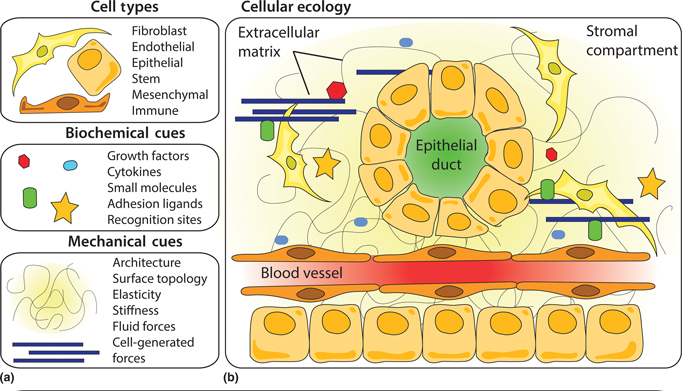Crossref Citations
This article has been cited by the following publications. This list is generated based on data provided by
Crossref.
Yang, Zehong
Xu, Hongyan
and
Zhao, Xiaojun
2020.
Designer Self‐Assembling Peptide Hydrogels to Engineer 3D Cell Microenvironments for Cell Constructs Formation and Precise Oncology Remodeling in Ovarian Cancer.
Advanced Science,
Vol. 7,
Issue. 9,
Ni, Yaya
Zhao, Lijiang
Xue, Xiaoping
Guoying, Xu
and
Zhao, Chuanxiang
2021.
Research progress of hydrogel-mediated disease therapeutics.
Journal of Nanoparticle Research,
Vol. 23,
Issue. 4,
Mudziwapasi, Reagan
Mufandaedza, Jonathan
Jomane, Fortune N.
Songwe, Fanuel
Ndudzo, Abigarl
Nyamusamba, Rutendo P.
Takombwa, Annah R.
Mahla, Melinda G.
Pullen, Jessica
Mlambo, Sibonani S.
Mahuni, Cyprian
Mufandaedza, Edward
and
Shoko, Ryman
2022.
Unlocking the potential of synthetic biology for improving livelihoods in sub-Saharan Africa.
All Life,
Vol. 15,
Issue. 1,
p.
1.
Khan, Suliman
Sharifi, Majid
Gleghorn, Jason P.
Babadaei, Mohammad Mahdi Nejadi
Bloukh, Samir Haj
Edis, Zehra
Amin, Mohammadreza
Bai, Qian
ten Hagen, Timo L.M.
Falahati, Mojtaba
and
Cho, William C.
2022.
Artificial engineering of the protein corona at bio-nano interfaces for improved cancer-targeted nanotherapy.
Journal of Controlled Release,
Vol. 348,
Issue. ,
p.
127.
Edwards, Vonetta L
McComb, Elias
Gleghorn, Jason P
Forney, Larry
Bavoil, Patrik M
and
Ravel, Jacques
2022.
Three-dimensional models of the cervicovaginal epithelia to study host–microbiome interactions and sexually transmitted infections.
Pathogens and Disease,
Vol. 80,
Issue. 1,
Hinkelman, Kathryn
Yang, Yizhi
and
Zuo, Wangda
2023.
Design methodologies and engineering applications for ecosystem biomimicry: an interdisciplinary review spanning cyber, physical, and cyber-physical systems.
Bioinspiration & Biomimetics,
Vol. 18,
Issue. 2,
p.
021001.
Millar-Haskell, Catherine
and
Gleghorn, Jason
2023.
A Large-format Polyacrylamide Gel with Controllable Matrix Mechanics for Mammalian Cell Culture and Conditioned Media Production.
BIO-PROTOCOL,
Vol. 13,
Issue. 17,
Chernokal, Brea
Gonyea, Cailin R.
and
Gleghorn, Jason P.
2023.
Engineering Translational Models of Lung Homeostasis and Disease.
Vol. 1413,
Issue. ,
p.
29.
Wang, Zhe
Numada, Akira
Wagai, Fumi
Oda, Yusuke
Ohgushi, Masatoshi
Maki, Koichiro
Adachi, Taiji
and
Eiraku, Mototsugu
2024.
Spatial cell fate manipulation of human pluripotent stem cells by controlling the microenvironment using photocurable hydrogel.
Development,
Vol. 151,
Issue. 6,





